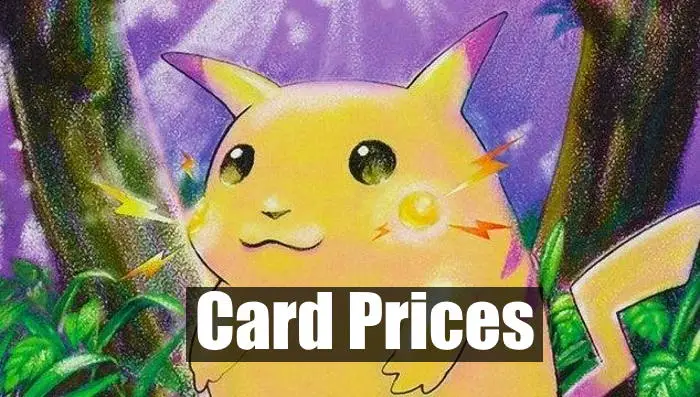Most people have some experience with the Pokémon trading card game. Some played the game in their youth, while others were parents of someone who played. Regardless of your relationship with the game, with the recent increase in Pokémon card value, many people find that they have collections of cards sitting around that are potentially highly valuable. Such people may revisit their old collections wondering “how much are Pokémon cards worth and how do I know if mine are valuable?” Well, let’s find out.
The worth of Pokémon cards can vary drastically. For instance, the average price for Pokémon cards in general is just over $1 each. Most rare cards cost $10 or less and more common cards are $1 or less. While the most valuable Pokémon cards have sold for more than $350,000.
Several factors can determine Pokémon card worth. Including things like what year the card was printed, its rarity, and what condition it’s in. As well as, if the card is a promotional card, is holographic, or has a shadowless border. This may seem like a lot, but it’s all pretty straightforward once you know exactly what you are looking for. Let’s take a closer look at each of these things and why they change card worth.
Key Takeaways
When looking through your Pokémon cards to determine their worth there are a few simple things that can help you find potentially valuable cards pretty quickly.
- Check your oldest cards (like base sets) first
- Check the rarity in the bottom corner (black star= rare)
- See if your cards are in good condition
- Check to see if your cards are holographic
- Look for any cards with misprints
- See if they are shadowless (have no shadow behind the art box)
- Use eBay sold listings or TCGplayer app for reference
What Makes Pokémon Cards Valuable?
Generally speaking, cards printed in older sets, or “base sets” are going to have a much higher worth than cards printed in more recent sets. This is because older cards are no longer in print, and their age means many of them have been lost or damaged. Furthermore, their age also makes them highly collectible due to their scarcity and nostalgia for many players.
Related: Best Pokemon Packs And Boxes To Buy
This low supply and high demand are why older cards carry the highest price tags. This same concept of low supply and high demand also applies to promotional cards and other limited-edition cards. Therefore, it’s a good idea to look at your oldest cards first when looking at your card value.
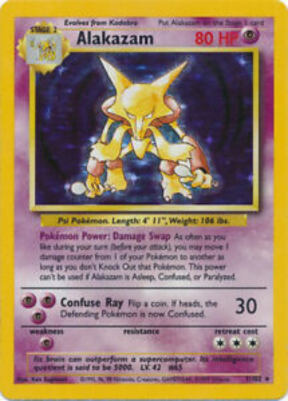
Almost all value goes back to supply (how many of a card exist) and demand (how sought after the card is) there are a few other factors that affect exactly how much a card is worth. For example, cards in excellent condition, holographic cards, first edition cards, and cards with misprints will have a higher value.
Resources like eBay sold listings and the TCGplayer app are good ways to get a quick idea of what a potentially expensive card may be worth.
The Rarity
There are four rarity classifications in Pokémon. They are common, uncommon, rare, and promotional. Although the word “rarity” is used, in this context it doesn’t refer to how scarce the card is. Rarity is something the creators assign to cards based on their power level, complexity, and design.
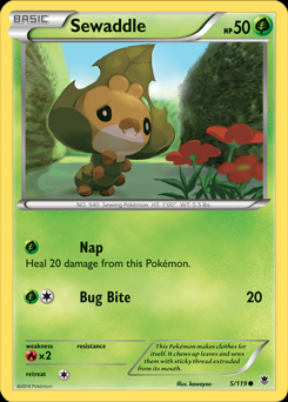
At the same time, it is common for cards with higher rarity to be more valuable than cards of lower rarity. So, checking the rarity is a good second step for finding the worth of your collection.
To tell the rarity of your cards, look for the small symbol that can be found in one of the bottom corners of the card. Common cards will contain a small black circle, un-commons have a small diamond and rares contain a small star. Promotional cards will contain a larger star with the word “promo” across them. While first edition cards will contain “Edition 1” just to the bottom left of the card art frame.
Card Condition
The condition of your cards is extremely important when it comes to Pokémon card worth. Cards that show signs of wear or damage, such as creases, bends, or marks along the borders will lose some of their value as a result. However, cards that show signs of light wear may still fetch good prices.
This is especially true with very old cards, as cards are expected to have gained some wear over such long periods. Keeping cards in binders or protective card sleeves can help prevent them from being damaged. Sleeving is especially important for preventing holographic cards from curling.
Related: The Best Card Sleeves For Mtg And Pokemon Cards
There are 5 widely accepted card conditions that buyers and sellers use as a guide for determining the condition of a card. They range from near mint to damaged and are as follows.
Near Mint:
- Cards with little to no imperfections
- Crisp corners
- Unblemished edges save for a few slight flaws
Lightly Played:
- Minor border or corner wear allowed
- Minor and infrequent imperfections ok
- No bends or creases
Moderately Played:
- May have some scratches or scuffs
- Creasing that doesn’t affect card integrity is ok
- Some border/edge wear allowed
Heavily Played:
- Cards show a major amount of wear
- Creasing and/or whitening allowed
- Some slight damage to card integrity (bends) allowed
Damaged:
- Major border/corner wear, scratching, and scuffing
- Folds, creases, or tears that impact the integrity of the card
- Water damage
Being Holographic
“Holo” is short for holographic. Very simply put, holographic cards are cards that appear “shiny”. They will also shimmer when moved back and forth in the light. They stand to be much more valuable than non-holo cards. This is because the number of holographic versions for any given card that comes out of a set is very low. This makes holo versions of already rare cards exceptionally few and far between.
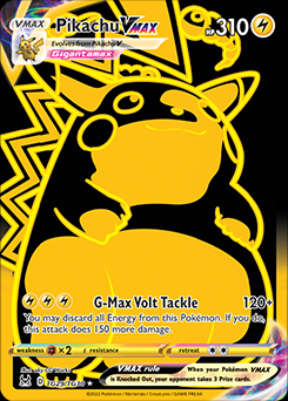
While not all holographic Pokémon cards fetch a huge price, holo cards are always worth more than their non-holographic versions. As an example, a Legendary Collection Squirtle sells for about $1.68. Alternatively, a holographic version of the card costs around $110. So, it is a good idea to keep your eye out for holographic versions of cards while you look through your collection.
Being Shadowless
Shadowless cards are a bit hard to pick out of a pile until you know what you are looking for. The easiest way to tell if your card is shadowless is to look to the right of the card’s artwork. If there is no shadow next to the yellow border, then the card is shadowless. Shadowless Pokémon cards are very high in value.
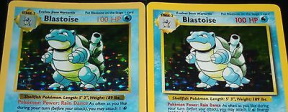
This is because the first few printings of the original “base set” of Pokémon cards from 1999 were all printed without shadows on them. Then, the company decided that the cards would be more aesthetically pleasing with a shadow added to the background. Therefore, not only are shadowless cards from the original base set but they are from the very first few printings of the set.
Having Misprints
Misprints sometimes called “error cards” are cards that contain some type of manufacturer’s defect or misprinting. This is different from damage to the card itself, as described above. Error cards may still be in perfect physical condition, as the imperfections referred to as misprints usually occur during production. Some common misprints include:
- Misspellings on cards
- Cards that have been miscut
- Misalignments on cards
- Cards with incorrect information like energy symbols/HP

The misprints listed above are the ones that tend to come up most often. However, any incorrect printing or manufacturer’s defect counts as an error card. So, keep your eyes peeled for things that look strange when going through your collection.
How Do Misprints Affect A Cards Value?
Misprints can affect card worth in a few ways. Some misprints, especially those that occur on already valuable cards, can make the card more valuable. This is because errors in printing are somewhat uncommon. So, if a card that is already in short supply also has a manufacturer’s error, it’s likely that it is very unique.
Furthermore, some people enjoy collecting error cards in general. Usually, the more severe the misprint is the more the card may be worth to someone who collects misprints. With that said, not all error cards are worth more than their properly printed counterparts.
Misprints do have a niche market and can sometimes make already scarce cards even rarer. However, when having the condition of a card professionally graded by a company any misprint will usually cause the card to get a reduced score.
Should You Grade Your Card?
If it turns out that you do have expensive cards in your Pokémon collection a possible course of action is to have them professionally graded. It can potentially increase your card’s value substantially. However, this is not always the case, and the process comes with pros and cons to it. Let’s take a deeper look at if grading may be worth it for you.

How Does Card Grading Work?
Grading works by sending your valuable cards to a 3rd party company to have their authenticity and condition analyzed and given a grade. Cards are graded on a numerical system from 1-10, with 1 being poor and ten being mint. The cards are then sealed in a plastic case or “slab” and labeled with their grade and certification number. This sealing is so that buyers can be sure that the card has not been exposed to any damage since its grading. Card grades are as follows:
- Poor
- Good
- Very Good
- Very Good/Excellent
- Excellent
- Excellent/Near Mint
- Near Mint
- Near Mint/Mint
- Mint
- Gem Mint
These companies judge the quality of a few different things when giving your cards a grade. Cards are graded based on each of the following categories: The centering, the corners, the edges, and the surface. They give each of these attributes a grade of 1-10. Then combine those grades to give the card one of the overall grades between 1-10 mentioned above.
Related: How To Double Sleeve MTG And Pokémon Cards
Is It Worth It To Grade Your Cards?
Usually, you would only want to send a card off for grading if it is in nearly perfect condition. This is because cards that receive low grades may lose some of their value. Grading companies are very strict on flaws and it’s not uncommon for cards to come back graded lower than a person would have expected.
For example, a card that would widely be considered near mint ungraded may come back graded as only excellent. These are the cases where cards lose value due to grading. Furthermore, there are fees for each card that you want to have graded, as well as shipping costs for mailing your cards.
So, in some cases, card value may be increased by grading. However, you should make sure that it is a card worth grading and be sure to factor in the fees and shipping costs before sending your cards off.
How Much Is A Pikachu Card Worth?
The price for different printings of the beloved rosy-cheeked Pokémon varies quite a lot. The cheapest Pikachu cards go for around 25 cents. While some very rare and hard-to-find versions of the card can sell for around $400.
It is worth mentioning that Pikachu has received many more promo card printings over the years than other Pokémon due to its popularity. So much so, that a shadowless base set Pikachu (usually this is the most expensive version of a card) is only worth around $167.
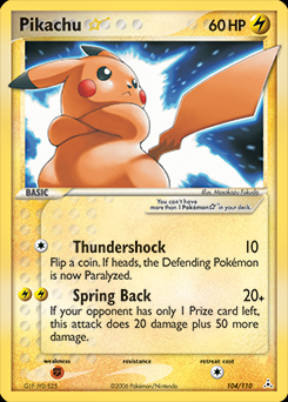
How Much Are Other Popular Cards Worth?
Pikachu is one of the most popular and recognizable Pokémon out there. However, there are other Pokémon whose cards can fetch similar or even higher, prices. Additionally, other popular Pokémon have very cheap cards. Let’s take a look at a few other notable Pokémon and what their cards are worth.
Charizard
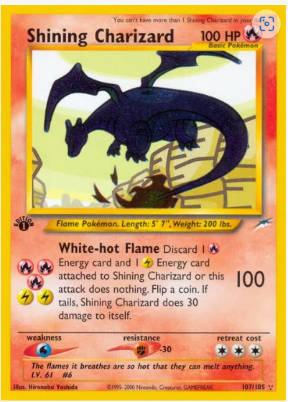
The cheapest versions of this fan-favorite Pokémon can be gotten for just a buck or 2. While versions like Charizard V from a few years ago go for around $15. The most expensive printings (Neo Destiny “Shining” Charizard) cost nearly $1400. The card is so expensive for a few reasons. Firstly, the Neo Destiny sets were the last time first edition cards were printed. Secondly, this was also the set where the “Shining” holographic design was introduced.
Mewtwo
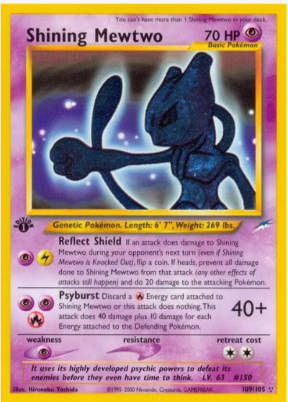
At the top of the spectrum is the Neo Destiny Shining Mewtwo, which is Mewtwo’s most expensive card. Depending on the condition these sell for between $170 and $460. Some cool but less rare versions, like the Mewtwo GX ultra-rare from 2019 cost around $30. While Mew’s cheapest printings are about 17 cents.
Squirtle
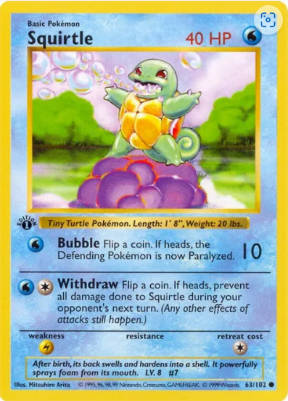
The most expensive Squirtle, like many other cards, is its shadowless base set printing, which has a value of about $100. More recently printed versions of the card, like the one from Plasma Blast for example are around $5. While the cheapest versions of the card have a worth of around 40 cents.
End Step
Dusting off your binders of old Pokémon cards in search of forgotten gems can be a little daunting. Especially for people who have been away from the game for a very long time. There are lots of cards with lots of different versions and printings.
However, with a bit of patience and due diligence, you can go through your collection and pretty quickly find out your Pokémon card worth. Regardless of if you find cards of high monetary value or not, going back and simply appreciating your cards is always fun. You really can’t put a price on the feeling of nostalgia you get when revisiting your favorite TCG.
